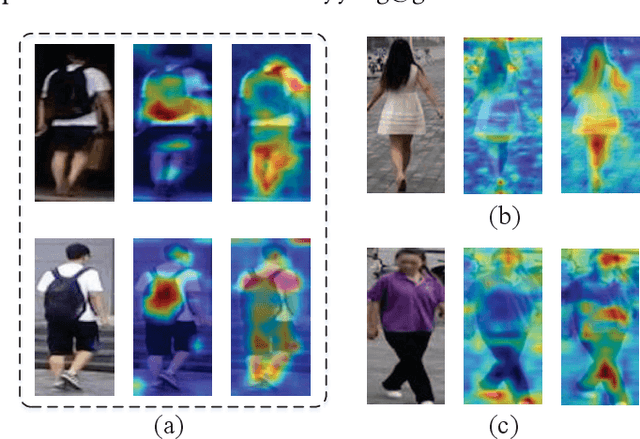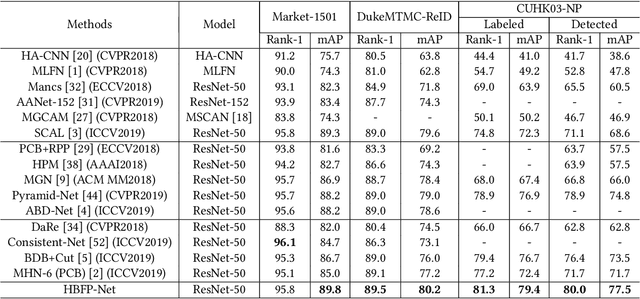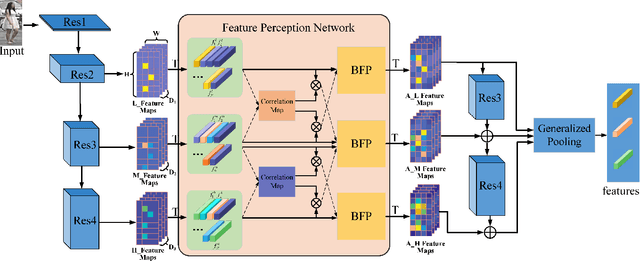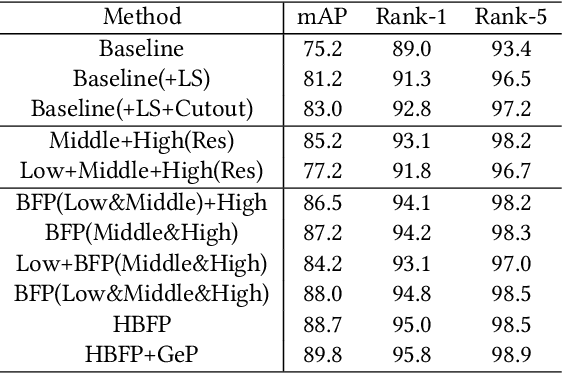Hierarchical Bi-Directional Feature Perception Network for Person Re-Identification
Paper and Code
Aug 08, 2020



Previous Person Re-Identification (Re-ID) models aim to focus on the most discriminative region of an image, while its performance may be compromised when that region is missing caused by camera viewpoint changes or occlusion. To solve this issue, we propose a novel model named Hierarchical Bi-directional Feature Perception Network (HBFP-Net) to correlate multi-level information and reinforce each other. First, the correlation maps of cross-level feature-pairs are modeled via low-rank bilinear pooling. Then, based on the correlation maps, Bi-directional Feature Perception (BFP) module is employed to enrich the attention regions of high-level feature, and to learn abstract and specific information in low-level feature. And then, we propose a novel end-to-end hierarchical network which integrates multi-level augmented features and inputs the augmented low- and middle-level features to following layers to retrain a new powerful network. What's more, we propose a novel trainable generalized pooling, which can dynamically select any value of all locations in feature maps to be activated. Extensive experiments implemented on the mainstream evaluation datasets including Market-1501, CUHK03 and DukeMTMC-ReID show that our method outperforms the recent SOTA Re-ID models.
 Add to Chrome
Add to Chrome Add to Firefox
Add to Firefox Add to Edge
Add to Edge